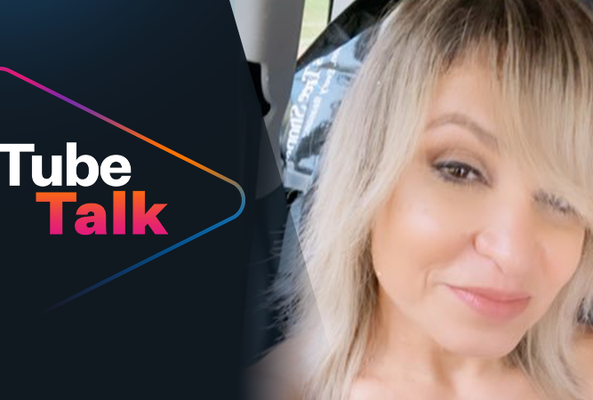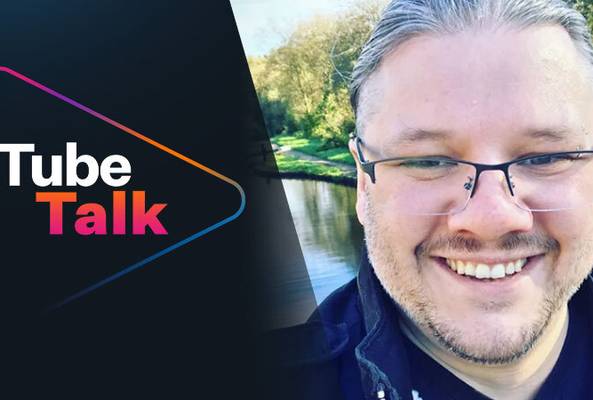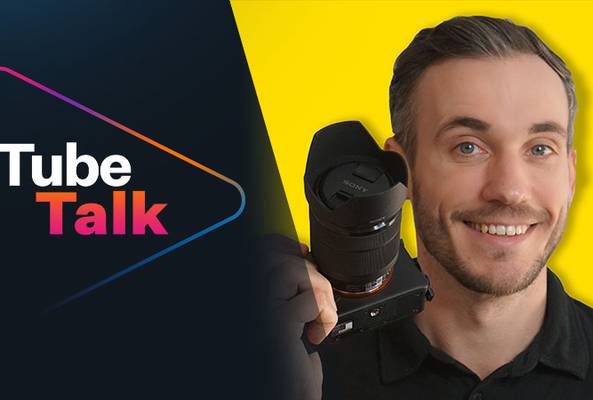Lydia Sweatt is a writer who loves balancing her article/blog time indoors with a healthy dose of nature. She bikes, hikes, and identifies edible plants along the way.
What Is it Like Being a Full-Time YouTube Creator?
JUMP TO SECTION:
- You’ll Have More Control as a Full-Time Creator
- Going from Employee to Boss Is a Slow Transition
- Full-Time YouTubers Have Multiple Streams of Income
- A YouTube Career Comes with Constant Marketing
- YouTube Is Fun, But You’ll Work Hard for That Perk
If you’re wondering what it’s like to be a full-time YouTuber, Roberto Blake just did you a huge favor.
On Feb. 12, the creative entrepreneur and YouTube veteran posted a Twitter thread describing life as a digital entrepreneur. He revealed what it’s like to make videos 24/7 and obsess over posting the “right” content. Because, hello: Money is on the line.
Here are some interesting points from the thread:
- YouTube income isn’t consistent all the time (even for full-timers).
- Family support is small when you first decide to go full-time.
- Everyone thinks your job is easy, but it’s not.
- Taking a break from YouTube is hard, as there’s no paid time off.
It all sounds a tad discouraging, but it’s better to know what you’re up against.
Read More: Is Your YouTube Channel on Track to Become a Business? Here are 5 Positive Signs
In this episode of TubeTalk, we chat with Gregory McFadden of GregsGadgets to better understand this lifestyle. McFadden has more than 200,000 subscribers, and he’s also a full-time YouTuber of two years. His popular videos – Apple product reviews and discussions – spurred him to a YouTube career at just 55,000 subscribers.
“If I’m making more money on YouTube than my full-time job, why would I stay [there]?" McFadden says. “Shouldn’t I just leave the job and go focus on YouTube?”
Are you considering the same path? Here’s what to expect as a digital entrepreneur on YouTube.
You’ll Have More Control as a Full-Time Creator
One thing you can't do with a traditional job is set your own schedule. Companies have strict business hours, and employees must work within those intervals to succeed.
But that always bothered McFadden. He didn’t like giving up control to bosses and CEOs, especially with YouTube being a self-directed job.
“I love waking up in the morning [knowing] my day is my day,” he says. “At this point, I can decide, 'Do I want to do a video? You know what, maybe I’m not going to do [one]'. I’ll go do something else. I'll relax.”

To be fair, growing a YouTube channel takes more doing than relaxing. But at least you have the option of choosing which days you’ll go hard and which days you’ll take it easy.
Going from Employee to Boss Is a Slow Transition
It’s easy to imagine some creators were instantly successful. You see their massive subscriber counts and can’t help but compare their journey to yours. You think, How long would it take me to get there? They’re earning a full-time income.

For most creators, the answer is several years, not months.
Just look at McFadden’s YouTube journey:
- Created a channel in 2013 with his friends
- Posted 10 gaming videos that got little to no views
- Quit YouTube for a few years
- Created GregsGadgets in 2015
- Began publishing videos once a week in 2017
- Became a full-time creator two years ago
McFadden’s story isn’t one of overnight success. It’s a nine-year journey filled with multiple twists and turns, revealing how much of a grind YouTube is. It’s also a risky bet. McFadden worked full-time for two years even while banking large YouTube checks.
“I was very cautious, obviously,” he says. “On YouTube, you can be a flash in the pan one month and do great. The next month, you can be out on the street again doing nothing.”
Full-Time YouTubers Have Multiple Streams of Income
The career YouTubers we’ve spoken with make money in several ways. When we last talked to Blake, he revealed a whopping 17 streams of income. YouTube expert Alan Spicer had the same mindset in a recent TubeTalk episode. He shared many ways for creators to make money, and most were outside of YouTube.
Read More: 7 Lucrative Ways to Make Money Beyond YouTube
Here are the revenue sources creators keep talking about:
- YouTube AdSense
- Affiliate revenue
- Video sponsorships and brand deals
- Merchandise
- Coaching programs
- Online courses
- Public speaking
- Digital or physical products
- Channel Memberships
- Super Chats
McFadden has four income streams from this list: YouTube AdSense, affiliate revenue, sponsorships, and merchandise. So even if your channel takes off, diversifying your income is a proven way to launch a YouTuber career.
A YouTube Career Comes with Constant Marketing
Are you ready to put on your business hat? Because that’s what full-time creators wear when they’re running a channel by themselves.
Sure, they may have a business manager for landing brand deals and sponsorships. But no matter who’s on your team, self-promotion is a must.
“The business aspect of being a creator is something I kind of don’t like to deal with,” McFadden says. “Some creators are a lot better at it than I am. I don’t advertise a lot of stuff I do, which is not good.”
Remember: A YouTube channel isn’t your only income stream, but it is your best marketing tool. So posting videos (without promoting anything inside them) isn’t enough. You also need to promote your products, courses, or any service that pays your bills.
YouTube Is Fun, But You’ll Work Hard for That Perk
McFadden thinks all jobs are demanding in their own right. Whether working at McDonald’s or grinding away at an office, there’s always a task that wears people down. A common misconception – especially among viewers – is that YouTube is different. All you have to do is talk to a camera and get paid, right?

Not quite. YouTube creators have many hidden talents:
- Editing videos for a digital audience
- Headline writing for video titles
- Graphic design skills to create thumbnails
- YouTube SEO (search engine optimization)
- Understanding YouTube channel analytics
- Video production (lighting, camera setup, etc.)
- Building digital audiences
- Staying productive enough to plan videos
- Persevering through negative channel growth
“I probably spend more time being a content creator and focusing on [this] job than I did working a 9-to-5,” McFadden says. “I think that’s pretty much a guarantee at this point.”
The good news? None of it feels like work when you enjoy content creation. It’s a labor of love.
So here’s the big question: Are you ready to become a full-time YouTuber?
Before you do, master these five skills to ensure your success.



